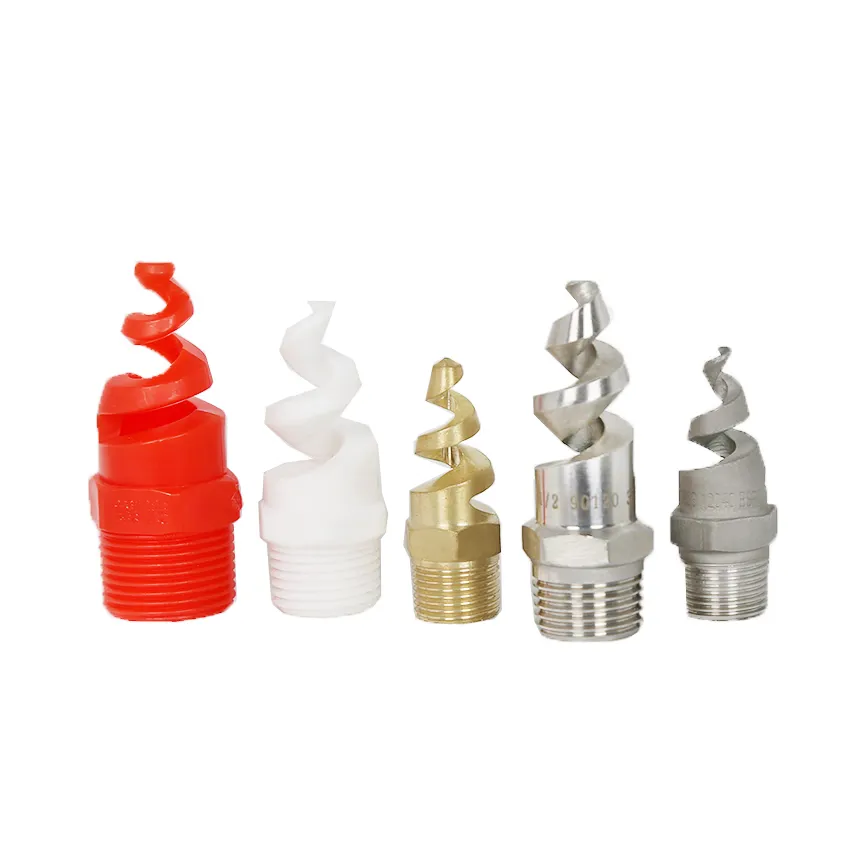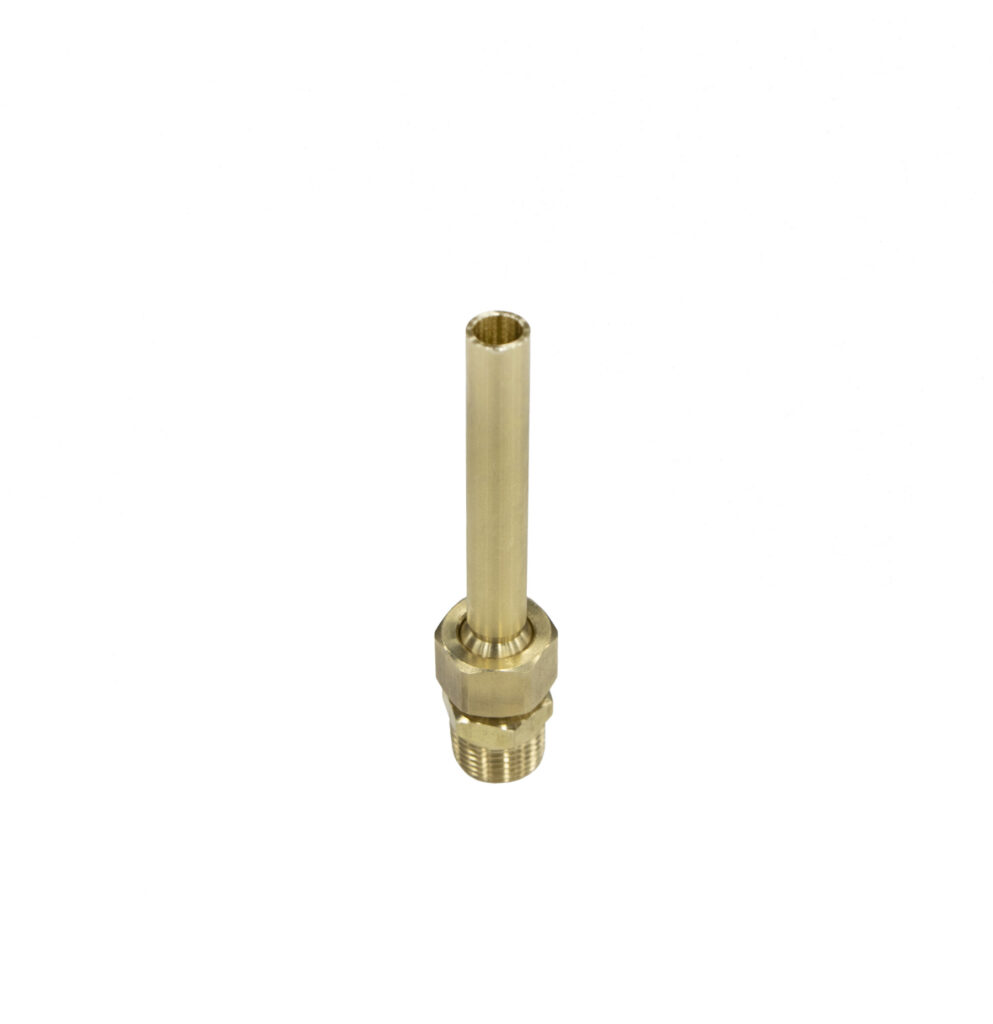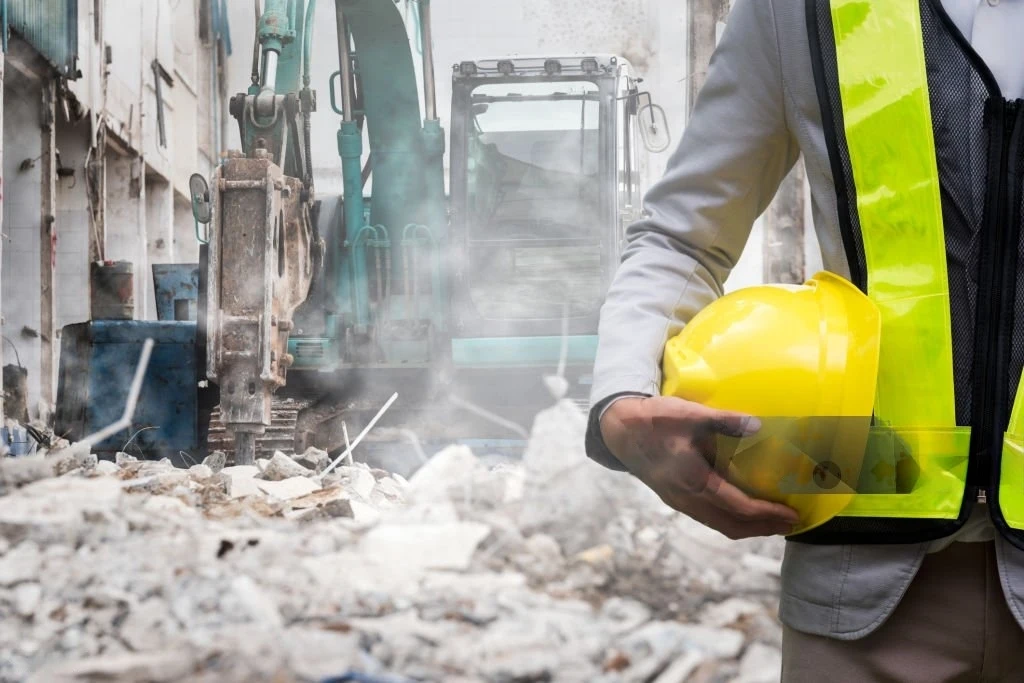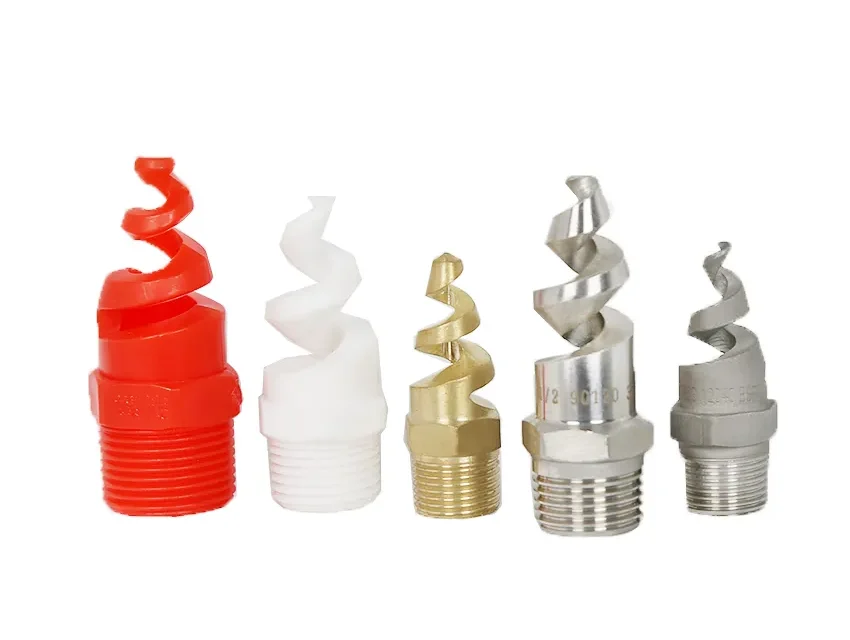Dust management is no longer an issue of cleanliness in industries involving mining, construction, and manufacturing; rather, it is a health and safety issue, it has become an issue of productivity and compliance with environmental requirements. Spray nozzles are one of the most important dust suppression tools, although not every nozzle is made to last.
Regarding the provision of perfect dust suppression, there are two common market trends: spiral nozzles and classic nozzles. Here, in this blog, we will discuss their differences, strengths, and weaknesses, so you will be able to make the proper choice regarding your operations.


Understanding the Basics
What Are Traditional Nozzles?
Conventional nozzles are commonly applied in the general spraying process and usually create a conical or flat pattern of showing. They are based on internal vane designs to atomize liquid into drops. Although broadly applicable in agriculture, cleaning, and firefighting, water pressure/flow rate is critical to their efficiency in dust suppression.
Common types of traditional nozzles include:
- Flat fan nozzles
- Full cone nozzles (vane type)
- Hollow cone nozzles (vane type)
What Are Spiral Nozzles?
Spiral nozzles such as the AusPowerCell Spiral Nozzle rely on an unusual curve geometry to cause a water jet to fragment into a finely dispersed pattern in several stages of impact without the use of a vane inside the nozzle. Such a pattern enables the free passages to be larger and hence very strong against blocking, which suits water circumstances that do not have water that is highly filtered.
Common materials for spiral nozzles include:
- Stainless steel (SUS316) for corrosion resistance
- Brass for cost-effectiveness
- Plastic (PP/PTFE) for chemical resistance
- Ceramic for extreme wear resistance

Performance in Dust Control
1. Spray Pattern and Coverage
The spray pattern directly influences how well dust particles are captured.
Traditional Nozzles:
Spiral Nozzles:
Spiral nozzles have a curved, vaneless aerodynamic design that disintegrates water into small droplets in several steps. This gives a smooth cone-shaped spray which is consistent in coverage even in extreme, windy situations. The spiral flow forms the turbulence, which causes the water droplets to reach a larger number of dust particles with a guarantee of maximum airborne dust knockdown.
Conclusions: The dust suppression with the use of spiral nozzles is more dependable and predictable, not to mention that in outdoor and high wind areas.
2. Droplet Size and Dust Particle Capture
The size of water droplets determines how effectively they bind to dust particles.
Traditional Nozzles:
Frequently produce larger droplets because of a less complex vane design. Large droplets drop rapidly, which implies that they do not remain in the air long enough to combine with small particles of fine dust (PM2.5 and PM10). This reduces their effectiveness of capturing the dust microscopic particles that have the greatest health hazards.
Spiral Nozzles:
Designed to make well-distributed, smaller droplets. Such droplets take longer to fall down in air, thus have a higher chance of hitting and engulfing the finer dust particles, thus drawing them towards the ground. This can go a long way in regulating the respirable dust particles, which are a possible cause of lung diseases such as silicosis
Conclusion: Spiral nozzles are highly effective for fine, hazardous dust control thanks to the ideal droplet size pattern.
3. Water Efficiency and Consumption
High efficiency in dust suppression is not only an effective response but a more water-efficient one to achieve the same outcome.
Traditional Nozzles:
Frequently need greater flows to gain reasonable coverage. In the long run, this equates to the use of more water, increased pumping expenses, and greater environmental waste.
Spiral Nozzles:
They are designed to work so that the greatest amount of contact between droplet and dust is achieved, i.e. you obtain the same or better dust suppression using less water. This is reflected in an area where mining activities are restricted in terms of access to water, in terms of reduced operating cost, and improved testing of sustainability.
Conclusion: Spiral nozzles give better performance using less water ,profitably saving money and resources.
4. Clogging Resistance and Reliability
Dust suppression systems are most likely used in areas where there is unfiltered water or recycled water, which may be contaminated by debris.
Traditional Nozzles:
There is the likelihood of clogging the internal vane and narrow passages using water containing sediment. Clogs affect the spray pattern, performance, and necessitate the need to clean as well as the period of non-operation
Spiral Nozzles:
The open-path and vaneless design offers greater free flow passages that enable the passage of debris, in that they cannot block the spray. This also makes them perfect in mining areas where less filtration of the water takes place
Conclusion: Spiral nozzles have better working time without interruption and no clogging periods.
5. Adaptability to Harsh Conditions
Dust suppression systems work in abrasive dust, corrosive environments, and at high temperatures.
Traditional Nozzles:
May be manufactured of stainless steel or brass, although the complexity of their structure internally may wear out quicker under abrasive dust or high-pressure usage.
Spiral Nozzles:
Manufactured in stainless steel SUS316, brass, plastic (PP/PTFE), and ceramic, selected depending on the corrosion resistance, wear resistance, and chemical compatibility. There is less potential area of weakness, and in severe situations, structural integrity is enhanced because of the one-piece design.
Conclusion: Spiral nozzles are built to last in heavy-duty industrial environments.
When to Choose Spiral Nozzles
Spiral nozzles are the preferred choice if you:
- Work in dust-intensive activities such as peat mining or bulk handling of materials
- They require effective water use that has no compromises in the dust control performance
- Don’t want the downtimes due to clogged nozzles
- Demand a nozzle that can operate well in severe, gusty, or stratified conditions
When Traditional Nozzles Might Work
Traditional nozzles are a better fit if you:
- Do not require much light dust suppression in regulated conditions
- Need cost-effective answers to non-life-threatening applications
- Use filtered water and reduce the risk of debilitating Durante
Conclusion
Although there is an equivalent use of both nozzle types, the spiral nozzle is the obvious choice when used on more demanding dust suppression tasks. They are designed uniquely, water-efficient, and resistant to clogs, making them suitable in the industry where dust control is of serious concern in operations.
When it comes to a quality and high-performance dust control system, a one-size-fits-all solution just doesn’t work in Australia, and AusPowerCell Spiral Nozzles are designed to provide repeatable and replicable performance in the most extreme industrial dust environments the country has to offer.
Get Your Spiral Nozzles Today
AusPowerCell has SUS316 stainless steel, brass, plastic (PP/PTFE), and ceramic spiral nozzles that are available in various sizes and spray angles to help you get the right nozzle you require. Reach out to our team and get professional consultation and individual solutions.
📞 +61 437 233 612
📧 admin@auspowercell.com
🌐 www.auspowercell.com
Frequently Asked Questions (FAQs)
How do I choose the right spiral nozzle for my application?
Consider the type of material, the spray angle, flow rate, operation pressure, and environmental conditions. The team at AusPowerCell can assist you when you need to choose the appropriate nozzle corresponding to your needs.
Can spiral nozzles handle high-pressure applications?
Yes. The superior quality of spiral nozzles ensures that operating pressure is high, and therefore, they can be used in demanding industrial and mining sectors.
Are spiral nozzles more expensive than traditional nozzles?
Yes, the price of a spiral nozzle may be more expensive at the beginning, because it requires a more advanced design and more durable elements. Nonetheless, they also tend to be cost-effective over the long term by using less water, requiring less effort, and wasting less time due to clogging.


